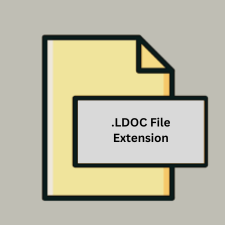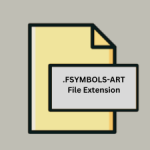.LDOC File Extension

CutOut Project
| Developer | FRANZIS |
| Popularity | |
| Category | Raster Image Files |
| Format | .LDOC |
| Cross Platform | Update Soon |
What is an LDOC file?
The .LDOC file extension is associated with CutOut, a software used for creating photo montages and extracting objects from images. These files store projects that include images and data related to the editing process within the CutOut application.
More Information.
The .LDOC format was designed to preserve the state of photo editing projects in CutOut. It allows users to save their work-in-progress, including image selections, masks, and other editing parameters, for future modification or final rendering.
Origin Of This File.
CutOut, developed by Franzis Verlag GmbH, introduced the .LDOC format to save and load editing projects within its environment. The software is primarily used by photographers and designers for advanced image manipulation tasks.
File Structure Technical Specification.
.LDOC files are typically structured to include:
- Original images or references to them
- Layer information such as masks and selections
- Editing history and adjustments applied
How to Convert the File?
Windows
- Open CutOut: Launch the CutOut software on your Windows computer.
- Load .LDOC File: Open the .LDOC file directly within CutOut.
- Export or Save As: Once opened, use the “Export” or “Save As” option within CutOut to convert the project to a different format supported by CutOut or compatible applications.
Linux
- Use Wine: Install Wine, a compatibility layer for running Windows applications on Linux.
- Install CutOut: Install CutOut using Wine.
- Open .LDOC File: Launch CutOut through Wine and open the .LDOC file.
- Export or Save As: Use CutOut’s export or save functionality to convert the project to a compatible format.
macOS (Mac)
- Run CutOut: Open the CutOut application on your Mac.
- Load .LDOC File: Open the .LDOC file directly within CutOut.
- Save or Export: Use the export or save options within CutOut to convert the project to a format compatible with macOS applications.
Android
- Virtual Machine: Use a virtual machine (VM) app on Android that supports Windows.
- Install CutOut: Install CutOut within the virtual machine environment.
- Open .LDOC File: Launch CutOut and open the .LDOC file.
- Export or Save As: Use CutOut’s export or save functionality to convert the project to a compatible format. Transfer the converted file back to the Android host if necessary.
iOS (iPhone, iPad)
- Virtual Machine: Use a virtual machine app on iOS that supports Windows.
- Install CutOut: Install CutOut within the virtual machine environment.
- Open .LDOC File: Launch CutOut and open the .LDOC file.
- Export or Save As: Use CutOut’s export or save functionality to convert the project to a compatible format. Transfer the converted file back to iOS if necessary.
Other Platforms
- Compatibility Layers: Use compatibility layers like Wine (for Linux) or virtual machines (for other operating systems) that support Windows applications.
- Install CutOut: Install CutOut within the compatibility layer or virtual machine.
- Open .LDOC File: Launch CutOut and open the .LDOC file.
- Export or Save As: Use CutOut’s export or save functionality to convert the project to a compatible format for the respective platform.
Advantages And Disadvantages.
Advantages:
- Preserves detailed editing information.
- Allows non-destructive editing and re-editing.
- Facilitates collaboration by sharing project files.
Disadvantages:
- Dependency on CutOut software for viewing and editing.
- Large file sizes depending on the complexity of edits.
How to Open LDOC?
Open In Windows
Open with CutOut software.
Open In Linux
Not directly supported; use Wine or a virtual machine with Windows.
Open In MAC
Open with CutOut software.
Open In Android
Not directly supported; use alternatives on Windows or virtual environments.
Open In IOS
Not directly supported; use alternatives on Windows or virtual environments.
Open in Others
Use virtual environments or compatibility layers.













